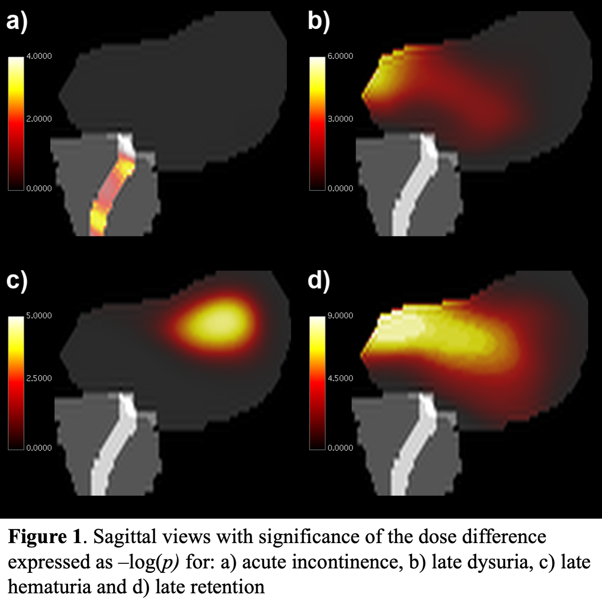Repeatability of Voxel-Based Analysis pipeline in radiation oncology: a first pilot experiment
PO-2119
Abstract
Repeatability of Voxel-Based Analysis pipeline in radiation oncology: a first pilot experiment
Authors: Serena Monti1, Eugenia Mylona2, Renaud de Crevosier2, Claudio Fiorino3, Tiziana Rancati4, Oscar Acosta2, Giuseppe Palma5, Laura Cella1
1National Research Council, Institute of Biostructures and Bioimaging, Napoli, Italy; 2University of Rennes, CLCC Eugène Marquis, INSERM, LTSI, Rennes, France; 3San Raffaele Scientific Institute, Medical physics, Milano, Italy; 4Fondazione IRCCS Istituto Nazionale dei Tumori, Prostate Cancer Program, Milano, Italy; 5National Research Council, Institute of Nanotechnology, Lecce, Italy
Show Affiliations
Hide Affiliations
Purpose or Objective
Recently the value of the Voxel Based (VB) analysis in radiation therapy oncology has been recognized (Palma et al 2019). However, the introduction of VB approaches in clinical scenarios and their inclusion in the radiation therapy (RT) planning workflow are still far. In this context, studies for VB analysis technical validation are required. In this framework, the repeatability of resulting spatial dose patterns associated with specific outcomes represents a first relevant step. The purpose of our analysis was to compare the results obtained by applying VB analyses in two different research groups on the same cohort of patients.
Material and Methods
Two-hundred fifty-four patients treated for prostate cancer with intensity-modulated RT at 2 Gy/fraction and belonging to STIC-IGRT and PROFIT trials (ref) were analyzed as part of a collaborative research project between Research Group 1 (RG1) and Research Group 2 (RG2). Patients were scored for acute (≤ 3 months) and late (> 3 months) urinary toxicity (incontinence, retention, dysuria, hematuria) using the CTCAE v.3.0. Planning dose maps were spatially normalized to a common reference anatomy and VB analyses were first completed by RG1 (Mylona et al 2019).
To perform an independent comparison, RG2 used a recently developed tool for VB statistical analysis. In detail, for each toxicity outcome, a generalized linear model (GLM) was designed to include dose maps: non-parametric permutation tests accounting for multiple comparisons were performed, and the significance p-map was generated.
Results
The RG2 VBA identified regions of significant association between dose and acute incontinence, late dysuria, late hematuria and late retention but not for acute retention, as previously reported by RG1. The p-maps highlighted the most significant association between dose and acute incontinence in the urethra. Regarding late toxicity outcomes, the most significant regions were located in sub-regions of the bladder specific for each end-point (Figure 1). At a visual comparison, the most significant areas identified by the RG2 pipeline roughly encompassed the clusters identified by RG1 as significantly associated with the same end-points.

Conclusion
Variability in VB results could arise from differences in the methods used for statistical analyses, and only a careful standardization of the procedures and sharing of all the relevant information would ensure repeatability of VB results. Here, a first VBA repeatability experiment in RT was performed. However, further in-depth analyses are warranted.